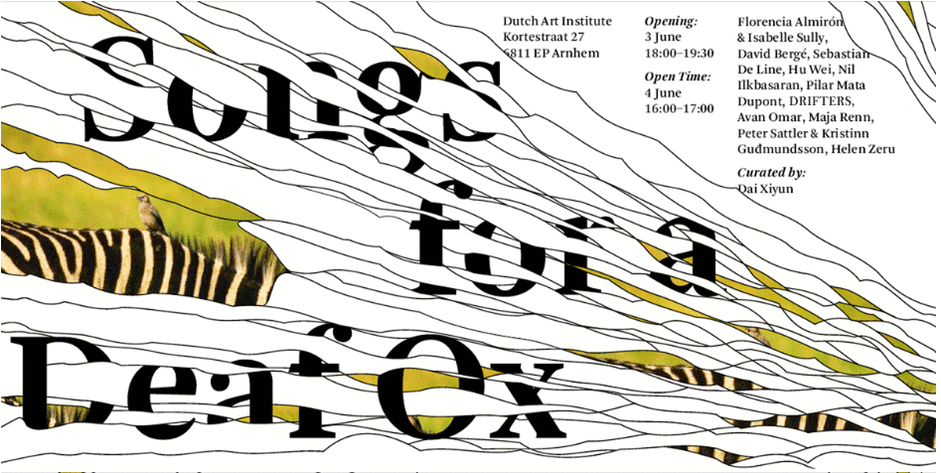
Group show curated by Dai Xiyun
Artists: Florencia Almirón and Isabelle Sully, David Bergé, Sebastian De Line, Hu Wei, Nil Ilkbasaran, Pilar Mata Dupont, Valentina Miorandi, Avan Omar, Maja Renn, Peter Sattler, Helen Zeru
June 3rd, 2016 18:00-19:30
June 4th, 2016 16:00-17:00
DAI, Kortestraat 27, 6811 EP Arnhem
Form that simply does not transfer, or does not transfer simply - text by Ruth Noack
"...I grafted the rose plants from my late mother's grave to the roses that we brought from Versailles.
My whole idea is to help my mum's roses receive better vibration, than to only just absorb death vibration... So, I might sound crazy, but what I did yesterday was to compromise for both species. In the day with a lot of sun I put the roses out, but as soon as it turns cold and before dark I bring them inside. I am definitely not sure about the results but I base from my intuition. I believe this experiment is not scientific but purely 'aesthetic of experience'. I even played them some love songs and Quaran verses in the morning. I use all my malay logic in handling the plants and open my option to Parisian gardeners, consultation..."
from a letter by Shooshie Sulaiman, March 2016
Songs for a Deaf Ox follows a 9-month research into non-transmittability of form. At the beginning stood some questions: Could it be that forms to not under all circumstances transfer well? Could it be that despite global transnationalisation, which is mimicked in the art world, diverse value systems might be in place? Could it be that heterogeneous contexts feed into the meaning of a sign and the forging of a form? Could it be that the often implicit cultures of gauging value, meaning and risk cannot be contained in the categories of either economy or art, either locality or globalisation? And if all this could be, what to do about it?
A first step would be to make explicit what is usually implicit, i.e. to render the cultures of gauging value, meaning and risk visible.
A second step would be to research in earnest the appearance of form that is non-transmittable.
A third step is to ask whether we even want everything to transmit. Perhaps we might not agree with the costs of transmittability? Perhaps we object to the way that form and content can only appear in the art world when it conforms to certain rules of visibility, - when it conforms to a dispositif that crushes much that inspired us about the aestehtic experience in the first place? Perhaps non-transmittability might be used as a weapon against a contemporary exhibition machine?
A fourth step is to begin, in a conscious way, practicing at keeping the source of our inspiration alive.
After spending some time researching non-transmittability of form in Indonesia, students were asked by their teachers to show their outcomes. They choose to privilege their own interaction with each other, using the moment of presenting to an audience some nuggets of newly acquired knowledge as a way to re-live their collective research process. The exhibition Songs for a Deaf Ox is based on the same committment to each other. It is the physical trace of an exercise in rendering (somewhat) intelligble each individual's work of art. With this exhibition Avan, Isabelle, Peter, Maja, Nil, Sebastian, Florencia, Daisy, Valentina, David, Hu Wei, Pilar and Helen demonstrate that to take care of each other's work means to take yourself seriously as an artist.
Ruth Noack, Berlin, May 2016